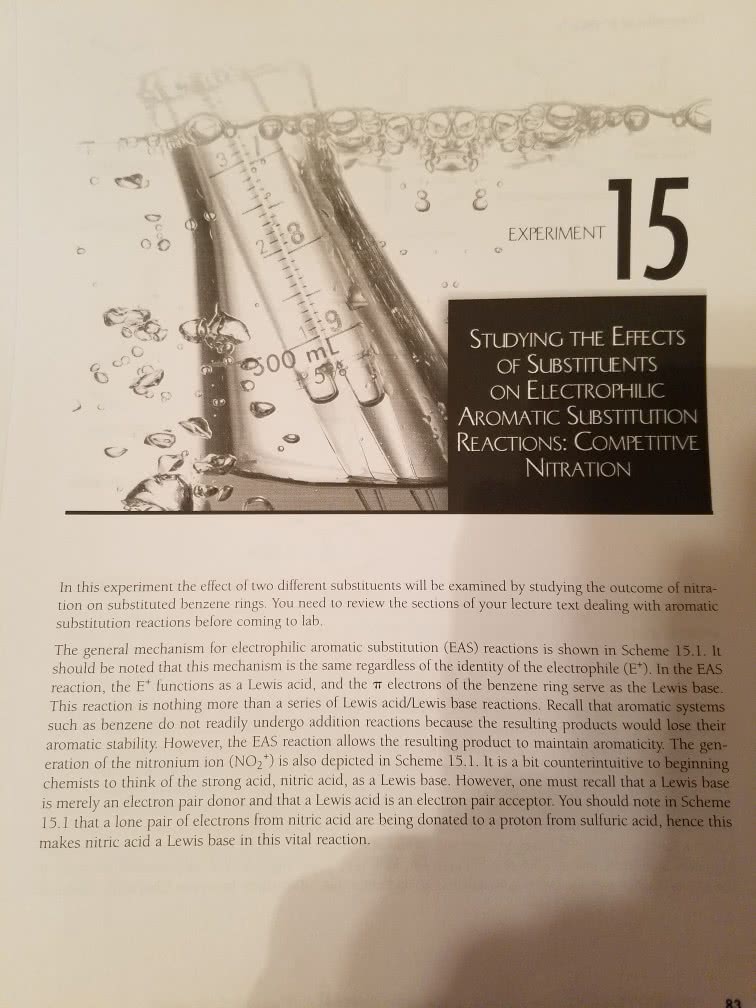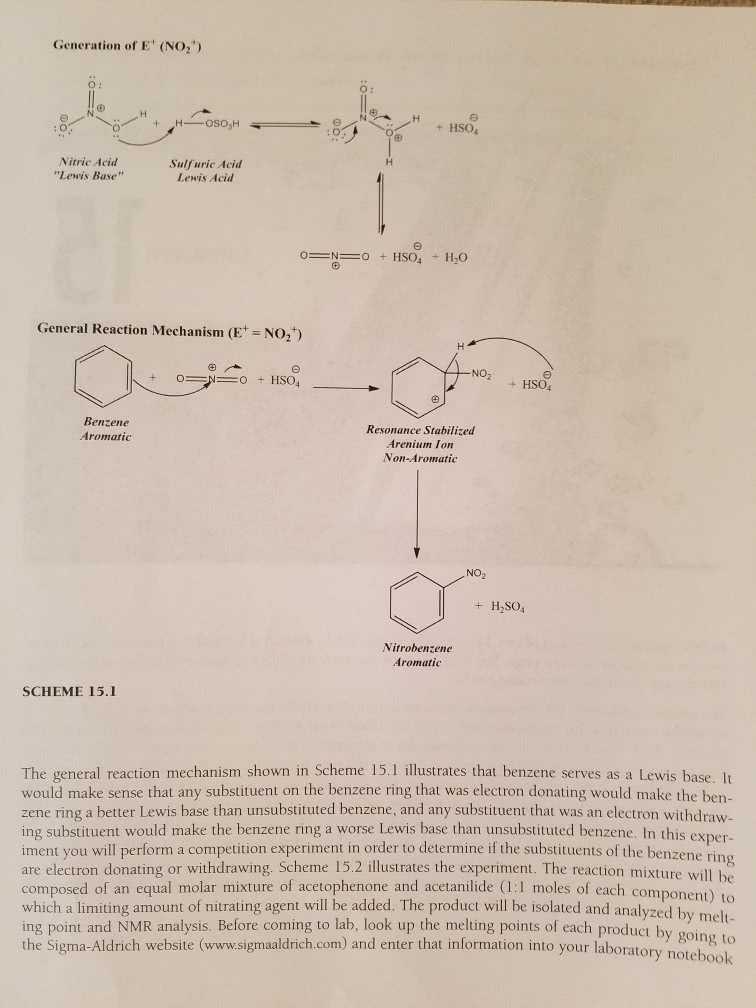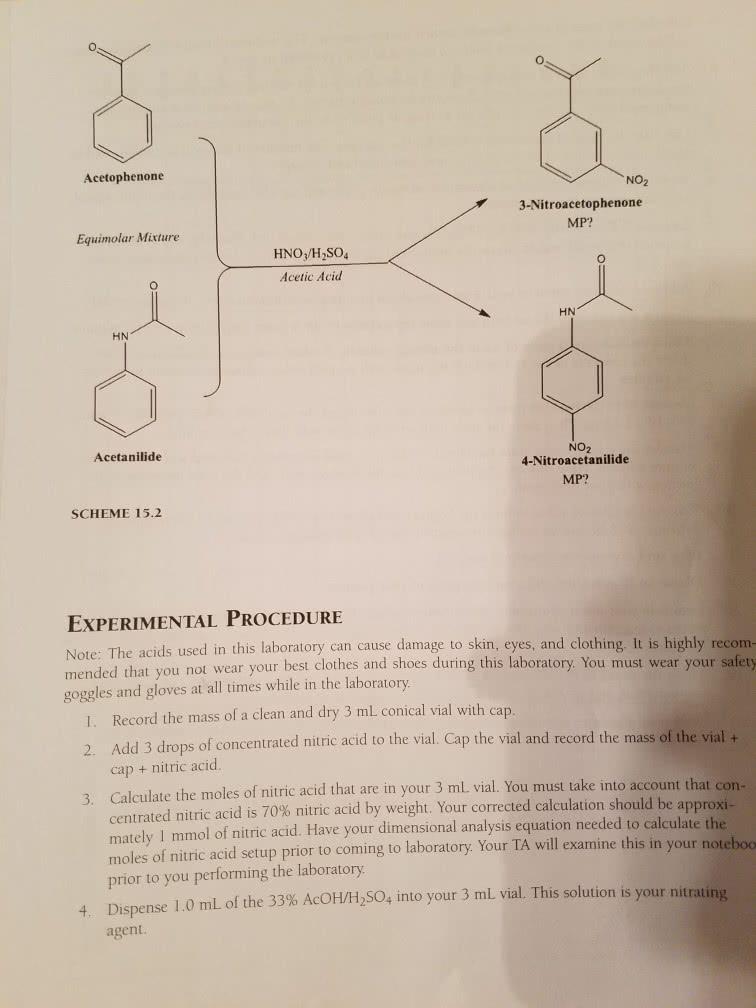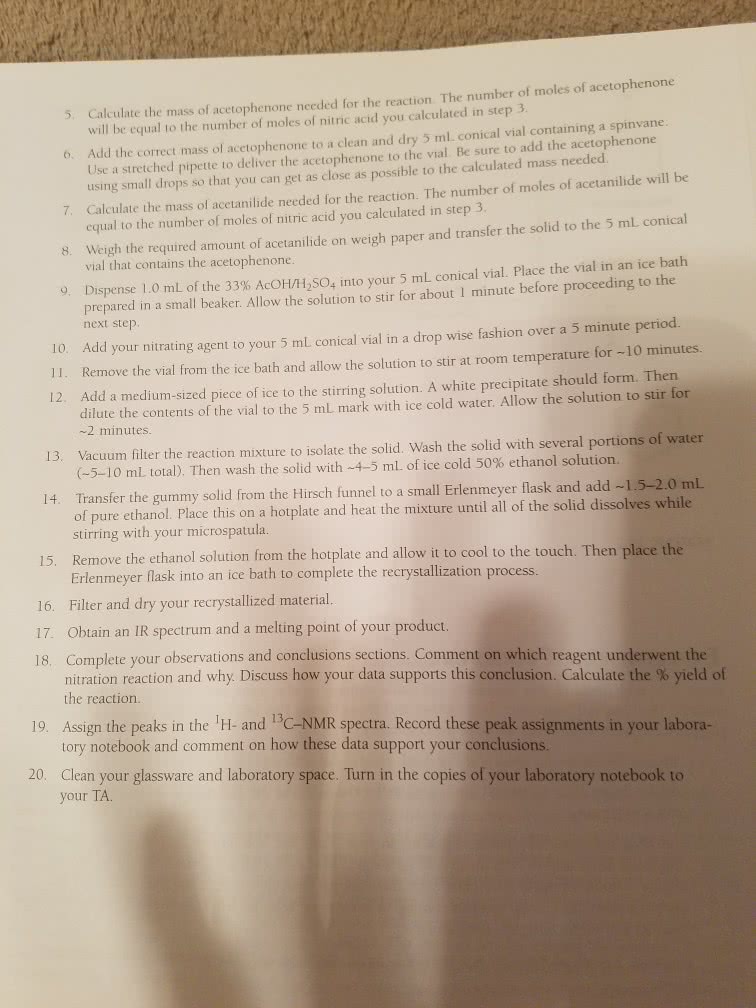CHM 2211L Study Guide - Methyl Benzoate, Electrophilic Aromatic Substitution, Nitronium Ion
Document Summary
In this experiment, the student will nitrate methyl benzoate to prepare methyl. The nitration reaction described in this experiment follows an example of a classical electrophilic aromatic substitution reaction. Here, a proton on the aromatic ring is replaced by a nitro group. Nitric acid reacts with the stronger acid, sulfuric acid, via an acid base reaction to give rise to the nitronium ion (no2. The nitronium cation serves as an electrophile and attacks the electron rich benzene ring of methyl benzoate, with substitution of a proton. The solvent, believe it or not, for this reaction is sulfuric acid and it protonates methyl benzoate. The nitronium ion then reacts quickly with this intermediate at a meta position, where the electron density is the highest due to resonance. You should convince yourself of this by drawing a proper reaction mechanism and include all necessary resonance forms in the mechanism, and clearly illustrate the product formed.




